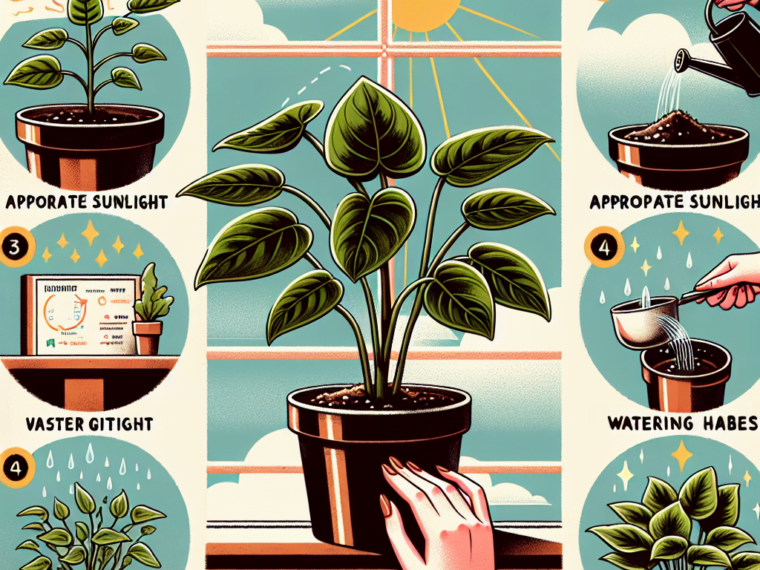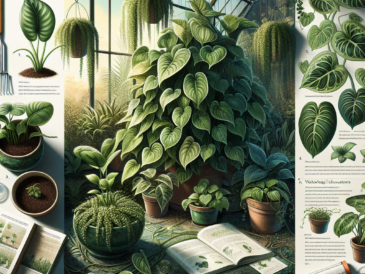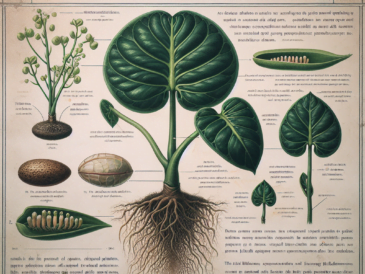Key points
• Select the right environment: Provide your Philodendron with bright, indirect sunlight, and a warm, humid atmosphere.
• Ensure proper soil and watering: Use a well-draining, peat-based potting mix, and water when the top inch of soil feels dry.
• Regular maintenance: Prune to stimulate growth, periodically check for pests, and apply a balanced, liquid fertilizer monthly during the growing season.
A. Overview of Philodendron Plants
As a member of the Araceae family, the genus Philodendron encompasses a wide array of species, each boasting unique characteristics. These versatile plants fit beautifully in different settings, including hanging baskets and climbing up trellises. Their enduring popularity is a testament to their simple maintenance and adaptability.
B. Popularity and Aesthetic Appeal
The heart leaf philodendron, with its charmingly shaped leaves, is particularly favored for its ability to thrive in a variety of indoor conditions. From the deep greens of mature leaves to the bright hues of new growth, the color spectrum of these plants can complement any decor. Furthermore, specialist designers such as Ambius have showcased how philodendrons can serve as key pieces in creating inviting office or home environments.
C. Benefits of Indoor Philodendron Plants
Studies have found that the presence of plants like philodendrons in living spaces can boost one’s mood, enhance concentration, and even increase air quality by filtering out pollutants.
Understanding Philodendron Varieties
Diving into the world of philodendrons reveals a variety of species that cater to different tastes and space requirements. From the climbing Philodendron hederaceum var. oxycardium to the statuesque Philodendron bipinnatifidum, this section will explore how each type can bring a unique touch to your home or office space.
A. Common Types of Philodendrons
There’s a wide variety of philodendron plants, including ones that vine and others that don’t climb at all. The heart leaf philodendron (Philodendron hederaceum) has vines that dangle, making it perfect for hanging pots. On the other hand, the tree philodendron or lacy tree philodendron (Philodendron bipinnatifidum), grows its own strong trunk and looks more like a tree.
B. Unique Traits of Different Species
Each species showcases distinct leaf shapes and growth habits; the Swiss cheese plant (Monstera deliciosa), a close relative, is often mistaken for a philodendron due to its similar leaf structure with characteristic holes, called fenestrations. However, knowledgeable gardeners recognize this plant for its unique attributes.
C. Selecting the Right Variety for Your Space
Selecting the right philodendron for your space demands consideration of the plant’s mature size, lighting needs, and the atmosphere of the intended area. Consulting with experts, such as Beatriz Garces of Nature’s Way Farms, can yield valuable insights into finding the perfect fit for your space.
Basics of Philodendron Care
Properly tending to your philodendrons fosters healthy growth and vibrant foliage. Developing a care routine that includes monitoring light exposure, timely watering, and accommodating the plant’s preference for warm, humid conditions, lays the foundation for a thriving philodendron, whether it’s a tabletop plant or a floor plant.
A. Optimal Lighting Conditions
The right lighting conditions are critical for philodendron health. A balance of natural light without direct sun exposure helps to maintain the rich color and vitality of the leaves, preventing issues such as yellowing or browning, which implicate lighting mismanagement.
B. Watering Requirements
A solid watering schedule caters to the philodendron’s needs without succumbing to common problems like root rot. The ‘finger test’ – inserting a finger into the soil to gauge moisture – is a simple yet effective technique for determining when to water.
C. Temperature and Humidity Preferences
Philodendrons relish warm, humid environments akin to their tropical origins. A room with consistent temperatures and heightened humidity levels replicates these conditions, promoting lush growth. Climbing varieties, in particular, benefit from the installation of a moss pole or trellis to mimic their natural inclination to ascend toward the forest canopy.




